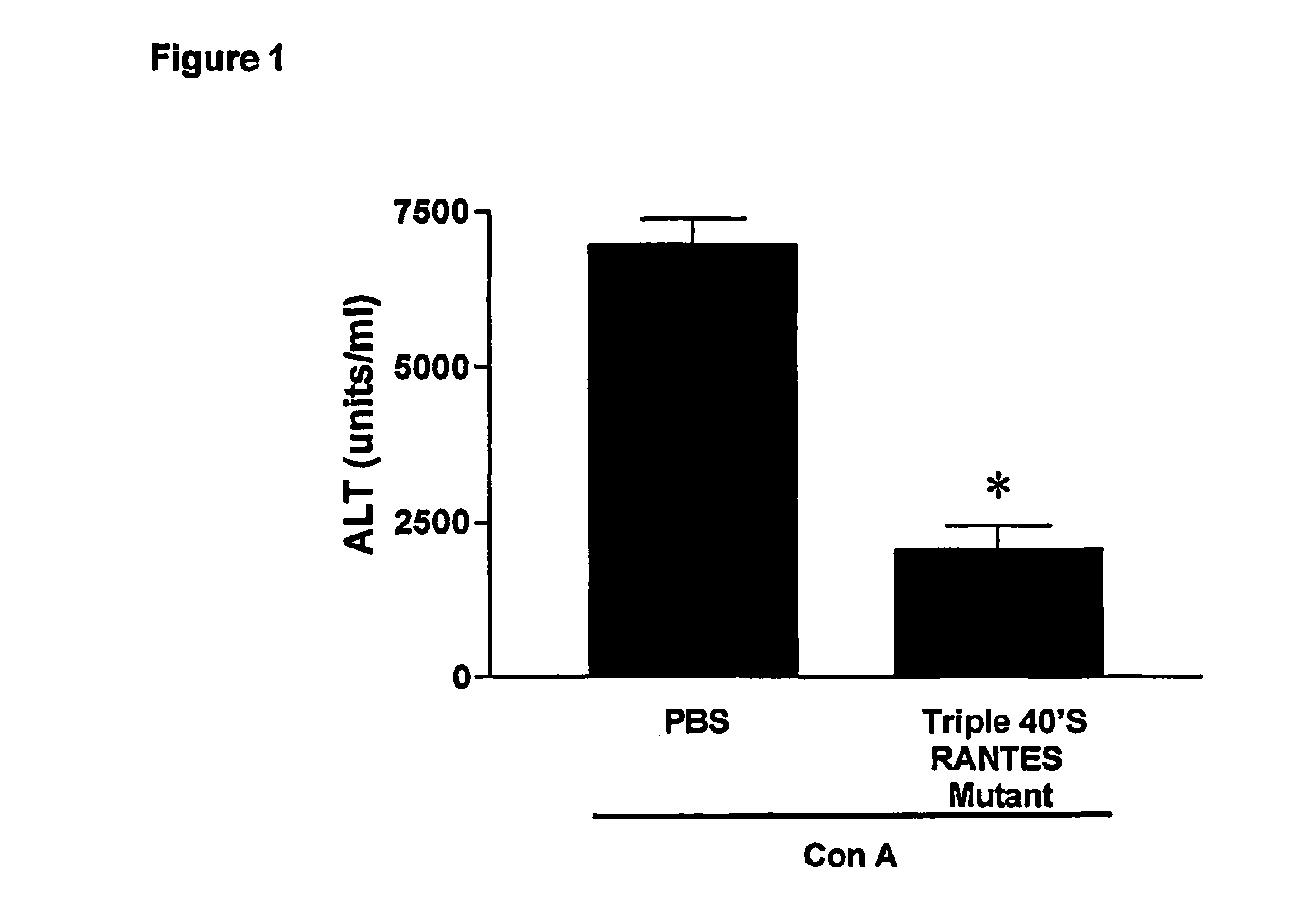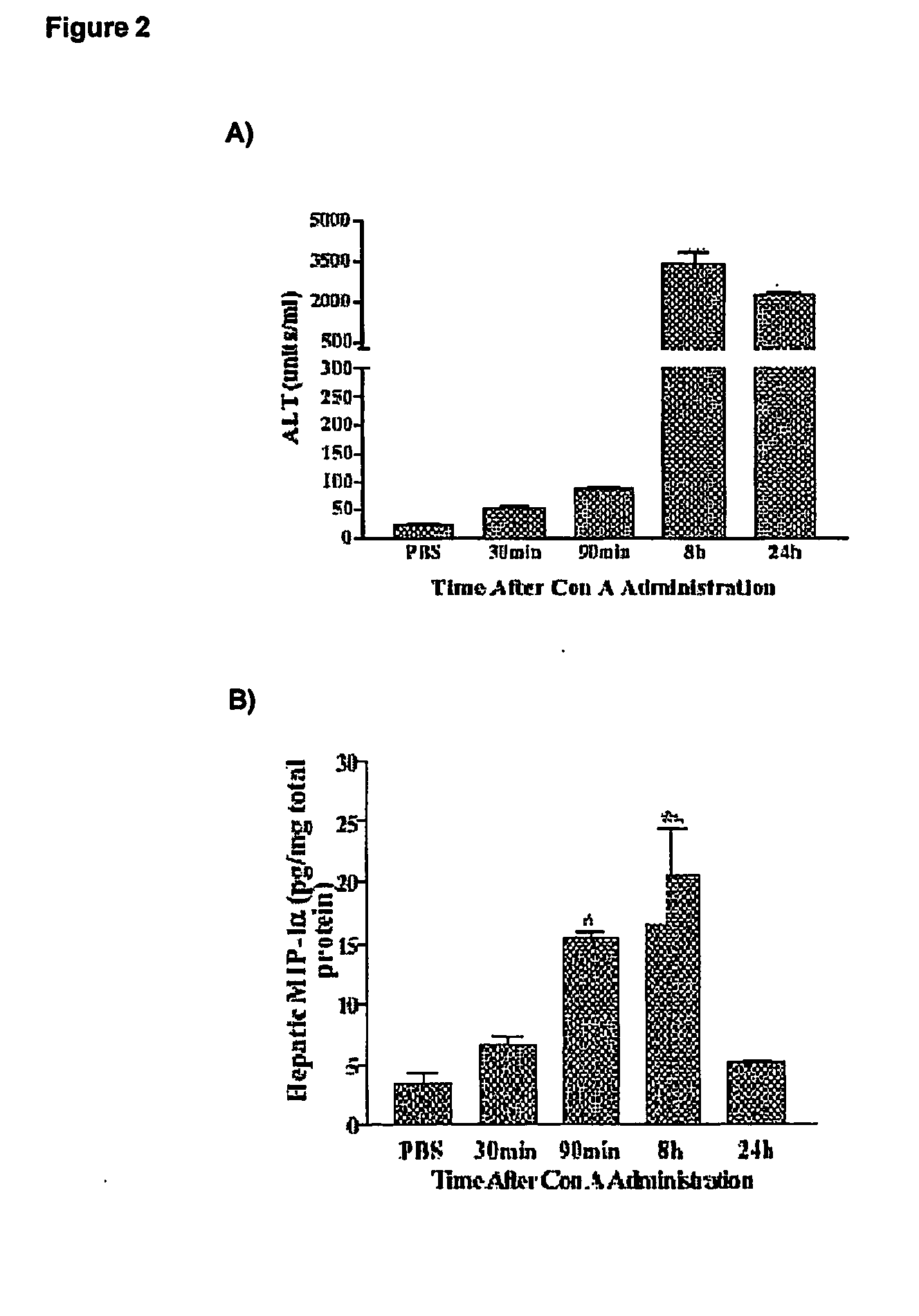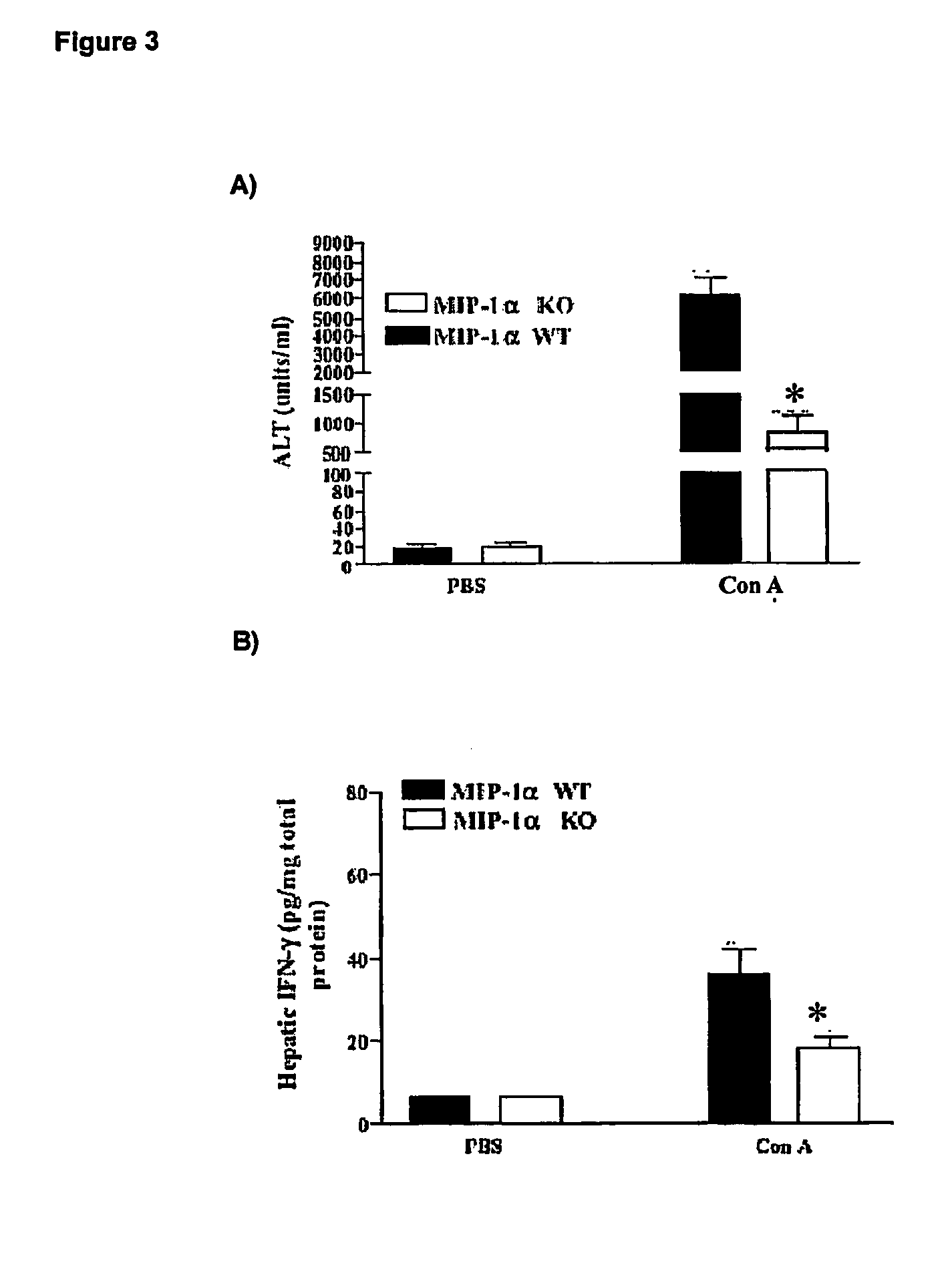Cc-chemokine mutants against liver diseases
a cc-chemokine and liver disease technology, applied in the field of cc-chemokine mutants, can solve the problems of incomplete understanding of cell-mediated hepatitis, inability to describe the therapeutic efficacy of an isolated, specific cc-chemokine mutant generated by the substitution of internal residues, etc., to achieve the effect of counteracting liver fibrotic injury and reducing gag-binding properties
- Summary
- Abstract
- Description
- Claims
- Application Information
AI Technical Summary
Benefits of technology
Problems solved by technology
Method used
Image
Examples
example 1
Efficacy of Different CCL5 Mutant Having a Reduced GAG-Binding Activity in a Hepatitis Model
[0057] Concanavalin A (Con A)-induced liver injury depends on the activation of recruitment of CD4(+) T cells by macrophages. In general, T cells are the driving force underlying immunologically mediated hepatic disorders, making therefore the Con-A model highly relevant for studying the pathophysiology of diseases such as autoimmune or acute hepatitis (Takeda K et al., 2000; Tiegs G et al., 1992).
[0058] The assay involves the measurement of serum alanine aminotransferase (ALT), a liver enzyme contained in hepatocytes and released into serum when these cells are damaged. ALT is the most widely used marker in humans and animals to document damage and destruction of liver cells (as in hepatitis), and, generally, ALT concentration correlates with histological changes.
[0059] As example of CC-chemokine mutant having a reduced GAG-binding activity, the CCL5 mutant called triple 40's RANTES mutan...
example 2
Relevance of MIP-1Alpha Expression in the Concanavallin a Mouse Models
[0062] A time course experiments on normal mice was performed to verify if there is any correlation between ALT levels and hepatic CCL3 / MIP-1 alpha protein concentration in control male C57BL / 6J mice and CCL3 / MIP-1alpha knock-out C57BL / 6J (Cook D N et al., 1995).
[0063] Mice (body weight of 21-23 grams; 5-6 weeks old; commercially available through Jackson Laboratories and Charles River Breeding Farms) were injected intravenously with freshly prepared Concanavallin A (Con A; 13.5 mg / kg; Sigma) in 0.1 ml Phosphate Buffer Saline (PBS), or with 0.1 PBS only (vehicle control).
[0064] The levels of serum alanine transaminase (ALT) were measured using a commercial kit (Sigma). Blood was collected from mice at 30 minutes, 90 minutes, 8 hours and 24 hours after Con A administration and under halothane anesthesia.
[0065] In a separate set of experiments, the levels of hepatic CCL3 / MIP-1alpha or IFNgamma were determined in...
PUM
 Login to View More
Login to View More Abstract
Description
Claims
Application Information
 Login to View More
Login to View More - R&D
- Intellectual Property
- Life Sciences
- Materials
- Tech Scout
- Unparalleled Data Quality
- Higher Quality Content
- 60% Fewer Hallucinations
Browse by: Latest US Patents, China's latest patents, Technical Efficacy Thesaurus, Application Domain, Technology Topic, Popular Technical Reports.
© 2025 PatSnap. All rights reserved.Legal|Privacy policy|Modern Slavery Act Transparency Statement|Sitemap|About US| Contact US: help@patsnap.com



